💪 Support independent web, support us:
If you have done the things to do in Japan, you’d know there are quite a few of them here in Omihachiman.
Omihachiman is a tapestry of experiences waiting to be unravelled, a canvas painted with cultural heritage, beautiful landscapes, and vibrant community.
Immerse yourself in the town’s colorful history, taste its local cuisine, and explore its many hidden gems, and you’ll find that Omihachiman is more than just a destination—a journey of discovery awaits you.
Without further ado listed below are some of the most fun things to do in Omihachiman:
1. Hachiman-Bori Canal
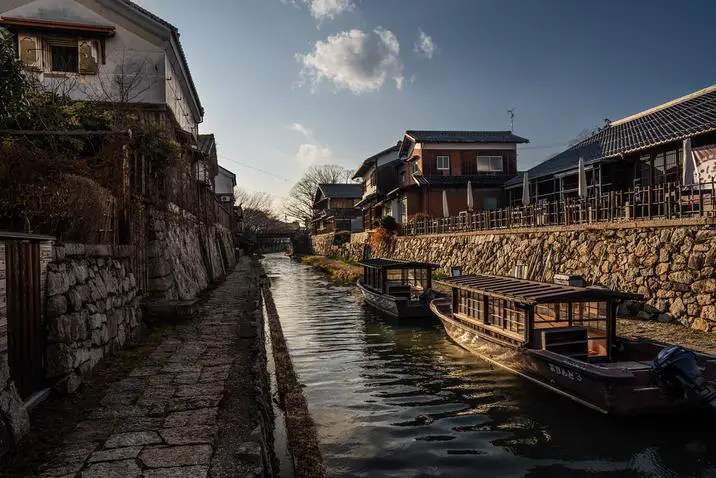
The Hachiman-Bori Canal is a picturesque waterway located in Omihachiman town, Japan, and holds a significant place in its history.
What to see or do: Take a stroll along the canal and take in the peaceful surroundings. The canal is lined with traditional Japanese houses and shops that sell local handicrafts.
You can also take a boat ride or try fishing in the canal.
Don’t miss: Don’t miss out on walking the scenic path along the canal and capturing some amazing photos.
Take a moment to visit some of the historic buildings situated around the canal, like the Omi Merchant Museum and the Hachiman-bori Visitor Center.
Insider travel tips: The best time to visit the canal is during the spring when the cherry blossoms are in full bloom, and during the fall when the trees lining the canal change colors.
You can also try some local dishes at the nearby restaurants while enjoying the beautiful view of the canal. Avoid visiting the canal during the mid-day when it can get crowded with tourists.
2. Azuchijō Castle

Azuchijō Castle is a 16th-century castle located in Omihachiman City, Shiga Prefecture, Japan.
What to see or do: Visitors can explore the ruins of the castle, which include the impressive stone walls and moats that still remain intact today.
There is also a museum on the site that showcases artifacts from the castle’s history, as well as a tea house where visitors can sample traditional Japanese tea.
Don’t miss: The panoramic views of Lake Biwa from the castle grounds are not to be missed. The castle is surrounded by beautiful gardens and cherry blossoms in the spring.
Insider travel tips: Visit during the autumn foliage season for breathtaking views of the colorful leaves. Wear comfortable shoes as there is a bit of walking involved to fully explore the castle ruins.
Be sure to bring a camera to capture the stunning scenery and historic landmarks.
3. Shinmachigawa Mizugiwa Park
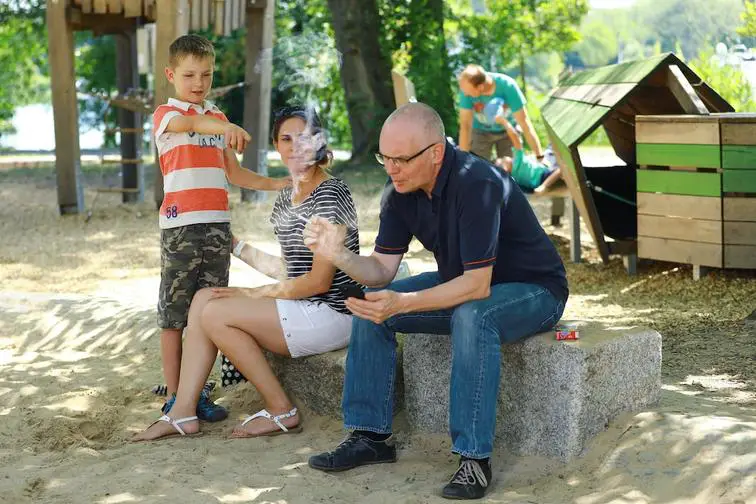
Shinmachigawa Mizugiwa Park is a picturesque riverside park located in the city of Omihachiman, Japan.
What to see or do: Visitors can enjoy strolling along the riverside and taking in the stunning landscape of the park. There are also several cherry blossom trees that bloom in the spring, making it a popular spot for hanami picnics.
Don’t miss: Be sure to check out the beautiful and historic Omihachiman Canal, which runs parallel to the park.
Insider travel tips: For the best experience, visit the park in the early morning or late afternoon to avoid crowds and enjoy the peaceful atmosphere.
Additionally, bring a blanket or mat for a relaxing picnic, and don’t forget to bring a camera to capture the stunning scenery.
4. Omihachiman Station
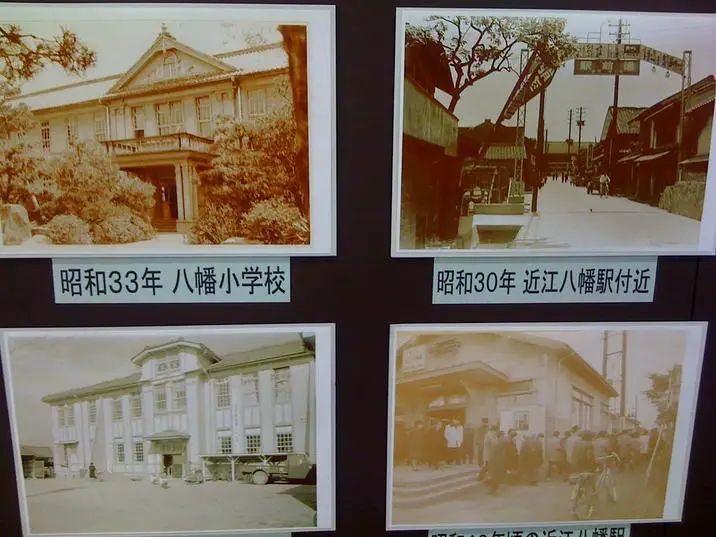
Omihachiman Station is a railway station located in Omihachiman City, Shiga Prefecture, Japan.
What to see or do: The station building is an interesting blend of modern and traditional Japanese architecture, with a distinctive thatched roof and intricate wooden lattice-work.
Visit the “Hachiman-bori” canal, which runs alongside the station and is a popular spot for strolling and boating.
Don’t miss: The Omihachiman shopping street (“Omihachiman-machi”), which is just a short walk from the station. Here you can find a plethora of shops, restaurants, and cafes offering a taste of the local culture and cuisine.
Insider travel tips: Take a scenic boat ride along the Hachiman-bori canal to fully appreciate the beauty of the area around the station.
If you’re visiting during winter, be sure to check out the Omihachiman Hina Matsuri, a traditional Japanese doll festival held in February and March.
5. Ho Park
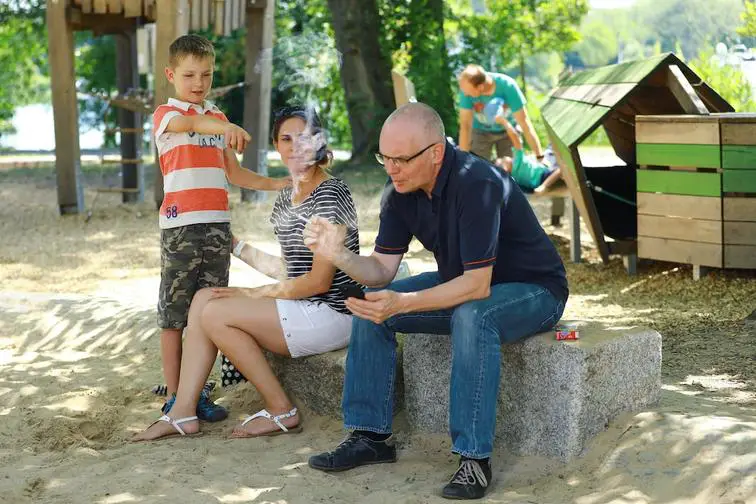
Ho Park is a serene Japanese garden in the city of Omihachiman, located in the Shiga prefecture of Japan.
What to see or do: Visitors can enjoy a leisurely stroll through the park while admiring the natural beauty of the blooming flowers, trees, and tranquil pond.
The park also features a traditional tea house where you can experience a traditional Japanese tea ceremony.
Don’t miss: One of the park’s highlights is the stunning view of Hachiman-yama, a mountain that overlooks the city of Omihachiman. The mountain makes for an impressive backdrop to the park’s peaceful atmosphere.
Insider travel tips: For a more immersive experience, visitors can also participate in one of the park’s workshops, such as Japanese flower arrangement or traditional ceramics.
It’s also worth noting that the park is particularly beautiful during cherry blossom season, but it can get crowded, so plan accordingly.
6. Omihachiman City Museum
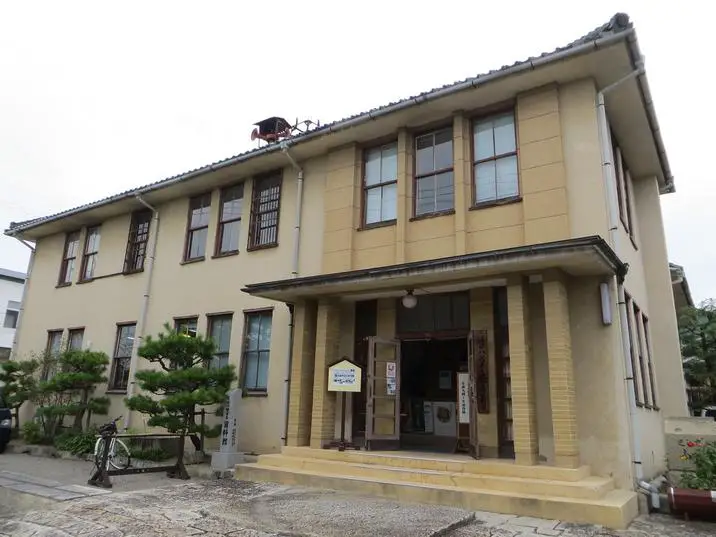
The Omihachiman City Museum is a historical museum located in Omihachiman, Shiga Prefecture, Japan.
What to see or do: The museum displays the cultural and historical heritage of the city through its artifacts and exhibits. Visitors can view artifacts from different periods, including the Jomon, Yayoi, Kofun, Nara, Heian, Kamakura, Muromachi, Edo, and Meiji periods.
The museum’s collection includes pottery, textiles, Buddhist statues, samurai armor, and weapons, among other artifacts.
Don’t miss: The highlight of the museum’s collection is the Hachimanyama burial mound, which dates back to the Kofun period (250-538 AD).
The burial mound is the largest of its kind in the city, and the museum displays the artifacts found inside it, including bronze mirrors, swords, and armor.
Insider travel tips: – The museum is closed on Mondays, except when Monday is a public holiday.
7. Omi merchant houses
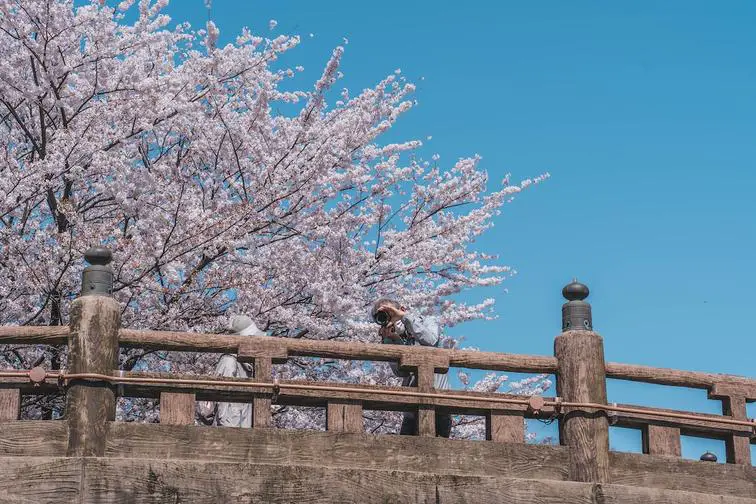
Traditional Japanese merchant houses in Omihachiman, Shiga Prefecture.
What to see or do: Explore the well-preserved Omi merchant houses, which were built during the Edo Period (1603-1868) and served as residences and shops for wealthy merchants.
Admire the traditional architectural features, such as the elaborate lattice work, sliding doors and shutters, and earthen walls.
Don’t miss: The opportunity to try your hand at traditional crafts, such as weaving or dyeing, and to sample local delicacies, such as Omi beef and saké.
Insider travel tips: Take a guided tour to learn about the history and cultural significance of the Omi merchant houses. Visit during the autumn season to see the vibrant fall foliage.
Keep in mind that some of the houses charge an admission fee.
8. Omi Peony Garden
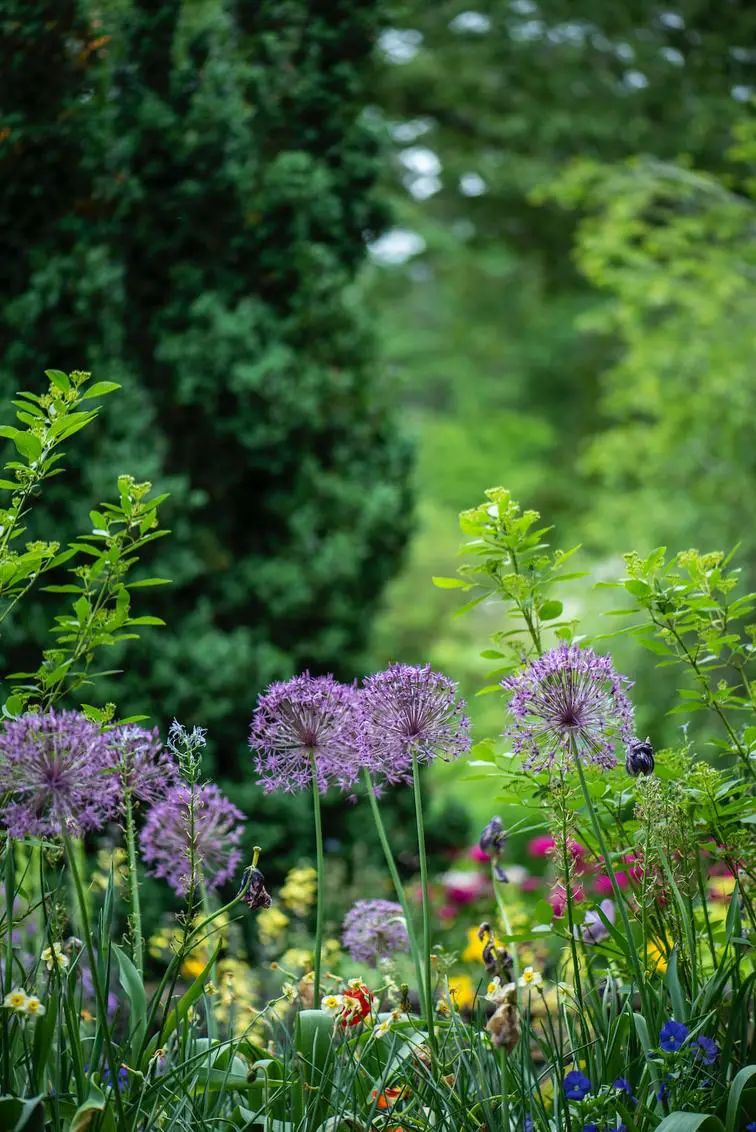
Beautiful garden dedicated to peonies, located in Omihachiman, a city in Shiga Prefecture, Japan.
What to see or do: Admire the gorgeous peony flowers in full bloom (usually from mid-April to early May), stroll around the serene garden paths, and take photos of the impressive displays.
Don’t miss: The giant peonies, some of which can measure up to 20cm in diameter, and the many different varieties of peonies on display.
Insider travel tips: Visit the garden early in the morning or on a weekday to avoid crowds. Bring a picnic and enjoy a relaxing lunch amid the beautiful flowers.
If you’re not travelling by car, take the bus from Omihachiman Station to Omi Hakkei Iriguchi bus stop, which is a short walk from the garden entrance.
9. Himure Hachimangu Shrine
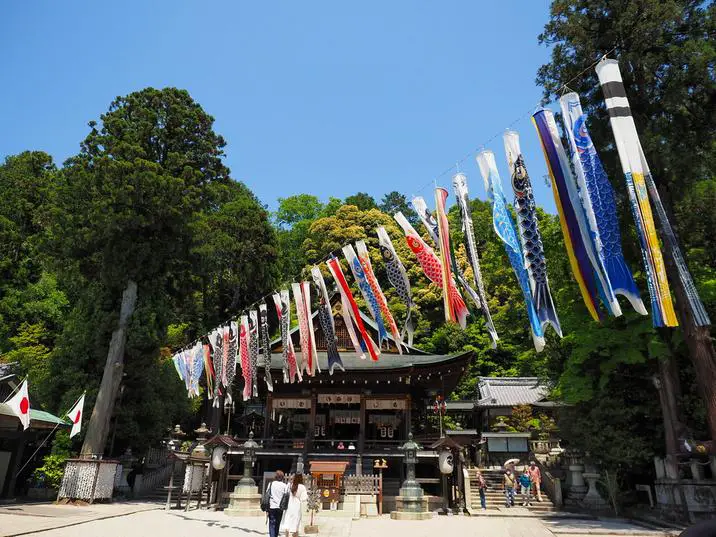
Himure Hachimangu Shrine is a Shinto shrine located in Omihachiman, a charming small town in Shiga Prefecture, Japan.
What to see or do: Visitors can take a stroll in the serene forest surrounding the shrine, admire the beautiful traditional architecture, and observe the locals pay their respects to the deities.
Don’t miss: The main hall of the shrine houses some of Japan’s most intricate wooden carvings, which are said to be the work of the legendary artisan Hidari Jingoro.
Insider travel tips: Don’t forget to try the town’s famous Omi beef, a local specialty that is considered one of Japan’s top three wagyu beef brands.
Also, visit during the Hachimangu festival on the first weekend of April to see traditional performances and enjoy delicious street food.
10. Oishi Shrine
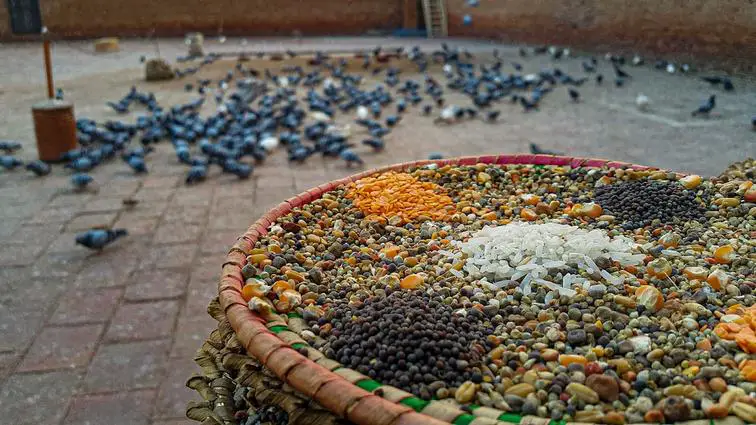
Oishi Shrine is a Shinto shrine located in Omihachiman, Shiga Prefecture, Japan.
It is dedicated to the legendary samurai warrior, Oishi Kuranosuke, who played a key role in the revenge against Lord Kira, the man responsible for his master’s death.
What to see or do: Visitors can explore the main shrine building and surrounding grounds, which include beautifully manicured gardens and a small museum featuring artifacts related to Oishi Kuranosuke and the revenge of the 47 Ronin.
There is also a small shrine dedicated to Oishi’s loyal wife, Yura Gozen.
Don’t miss: Be sure to check out the large stone torii gate and the statue of Oishi Kuranosuke located near the main entrance.
If you’re lucky, you may even be able to catch a traditional Shinto ceremony or festival taking place on the shrine grounds.
Insider travel tips: For a unique experience, try visiting Oishi Shrine during one of the shrine’s special events, such as the annual Ichi-no-Miya Festival held in May or the Oishi Kuranosuke Festival held in December.
Also, be sure to bring some coins to offer as a donation and be respectful of shrine etiquette, such as bowing before entering the main shrine building.
11. Sagicho Festival

Sagicho Festival is an annual festival held in Omihachiman, Japan, to pray for the safety and well-being of the community.
What to see or do: Witness the massive wooden torches, which are paraded through the streets before being set on fire and thrown into the nearby lake.
Admire the elaborate floats and dance performances that accompany the procession.
Don’t miss: The climax of the festival, when the blazing torches are tossed into Biwa Lake, creating a mesmerizing spectacle of fire reflected on the water.
Insider travel tips: For the best views of the festival, head to Hachiman-bori Canal, where the torches are launched into the lake. Be sure to arrive early to secure a good spot.
Wear warm clothing and waterproof shoes, as the festival takes place in early March and can be chilly and wet.
12. Higashi-Omi Burning Festival

The Higashi-Omi Burning Festival is a traditional Japanese festival held annually in Omihachiman. It is also known as the “Omihachiman Hadaka Matsuri” or “Naked Man Festival.
What to see or do: The festival involves men dressed only in fundoshi loincloths carrying large torches through the streets and into the temple. They then throw the torches into a towering pile of wooden barrels, creating a spectacular bonfire.
Don’t miss: The highlight of the festival is the moment when the men rush into the temple to grab special amulets that are believed to bring good luck.
It is a truly exhilarating experience to witness.
Insider travel tips: – The festival takes place annually on the third Saturday of January, so plan accordingly.
13. Chinzei Taisha Shrine
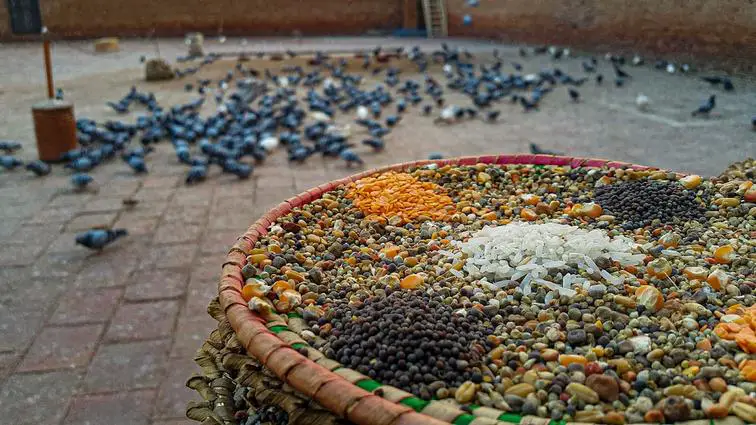
Chinzei Taisha Shrine is a sacred Shinto shrine located in the city of Omihachiman, Shiga Prefecture, Japan.
What to see or do: Visitors can explore the tranquil grounds of the shrine, which has been designated as a national treasure. The main hall of the shrine, called “honden,” is grand and impressive with intricate carvings on its walls and pillars.
Don’t miss: Be sure to check out the beautiful cherry blossom trees that bloom in springtime. The vibrant pink color of the blossoms create a stunning contrast against the white walls of the shrine.
Insider travel tips: Visit in autumn when the leaves change color for a breathtaking view.
14. Chomeiji Temple
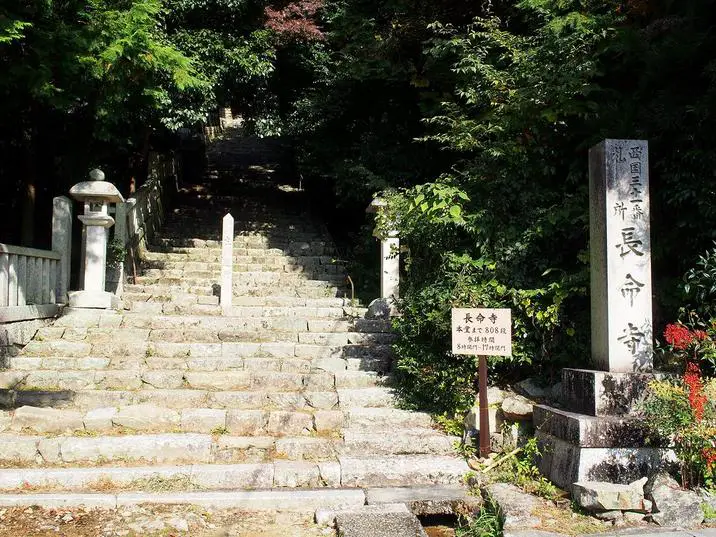
Chomeiji Temple is a historic Buddhist temple located in Omihachiman, Shiga Prefecture.
It dates back to the 16th century Edo period and is one of the 33 temples in the Kannon Pilgrimage route of Western Japan.
What to see or do: The temple grounds are filled with stunning Japanese gardens, including a karesansui (dry landscape) garden, a pond garden, and a chisen-kaiyushiki (pond strolling) garden.
Visitors can also explore the main hall, which features a statue of Kannon, the goddess of mercy, as well as various Buddhist relics and artwork.
Don’t miss: One of the highlights of Chomeiji Temple is the autumn foliage.
The surrounding hills turn brilliant shades of red and orange in November, making it one of the best spots in Omihachiman to enjoy the fall colors.
Insider travel tips: – Chomeiji Temple can be crowded during peak season, so arrive early in the morning or late in the afternoon to avoid the crowds.
💪 Support independent web, support us: